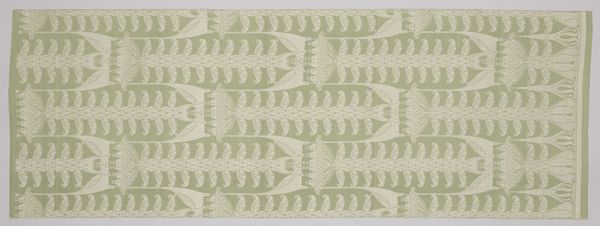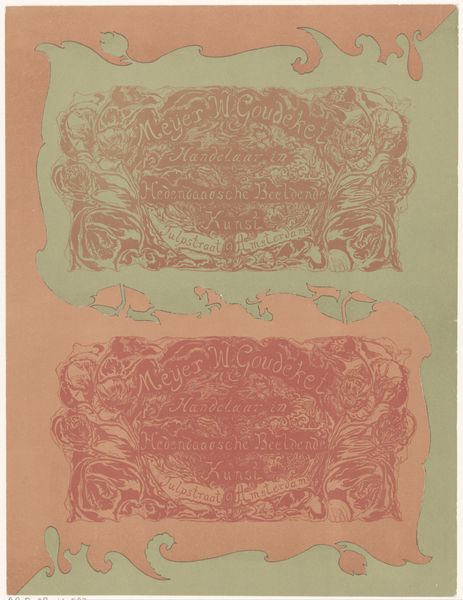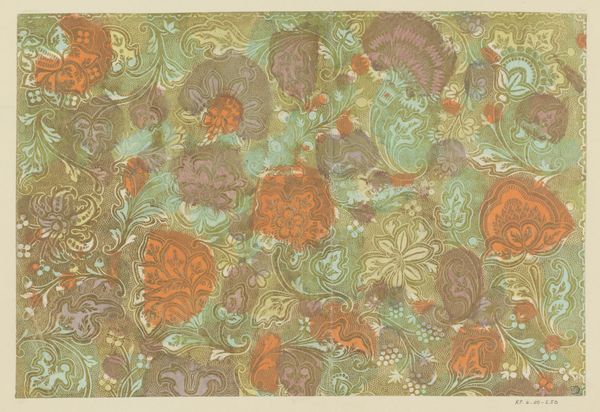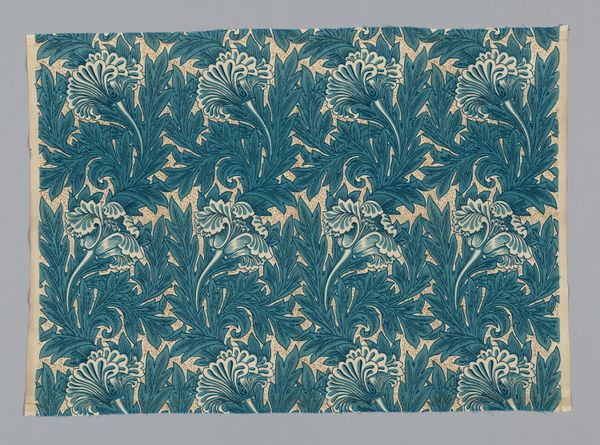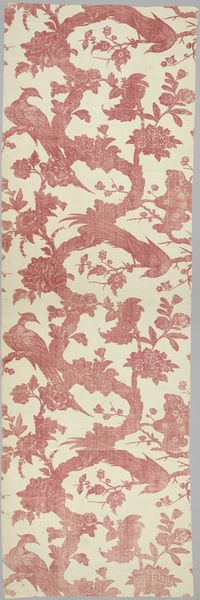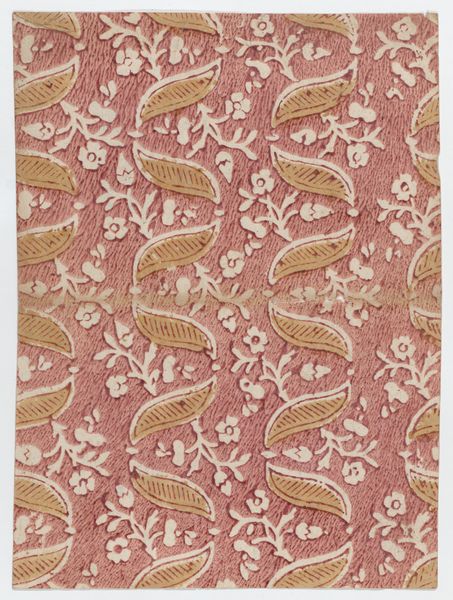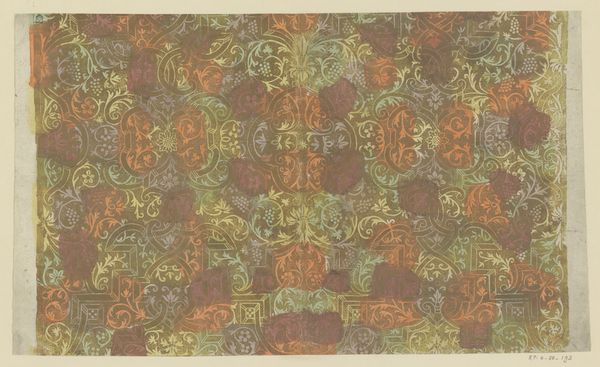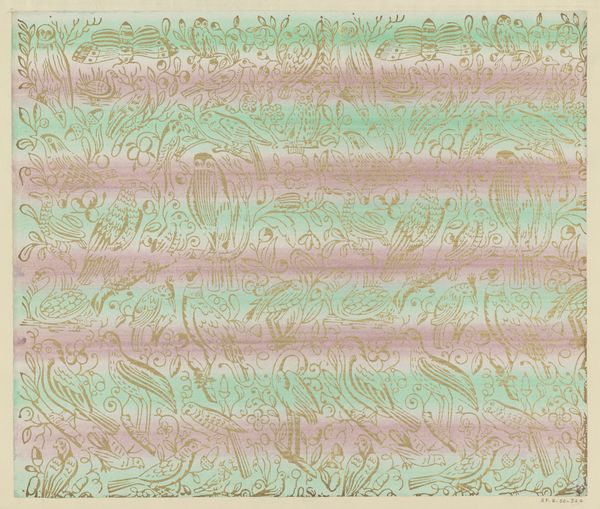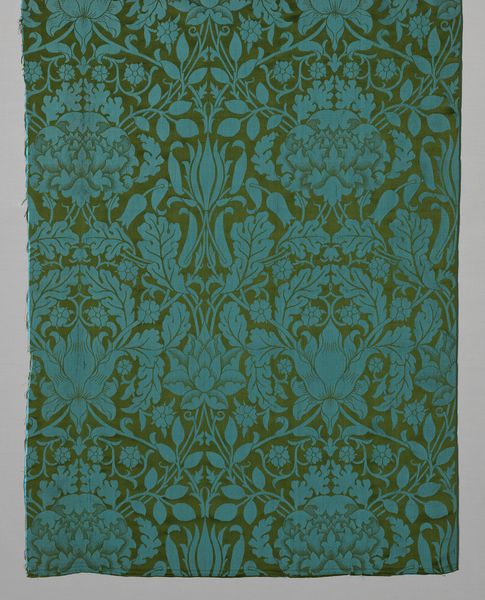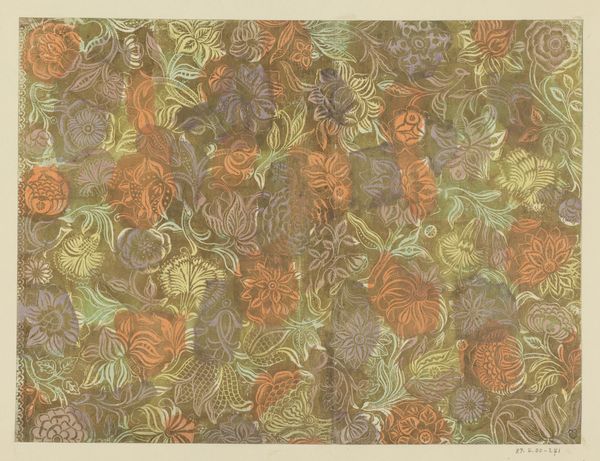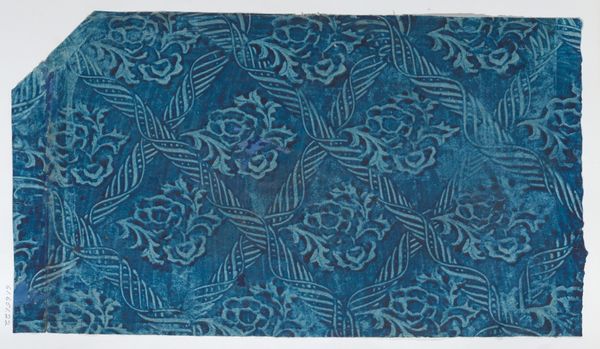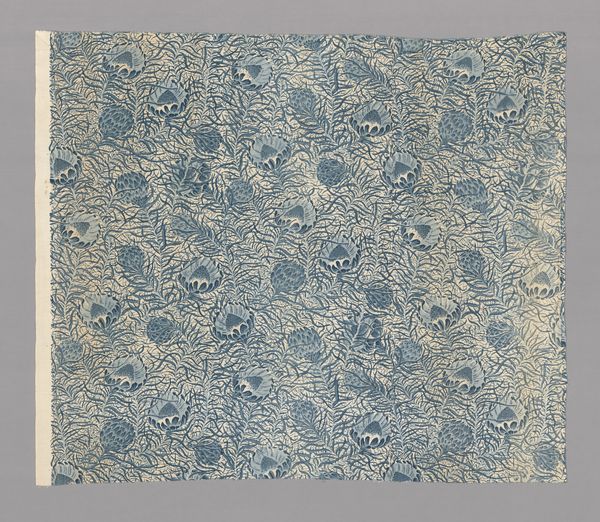
Blad met verschillende vogels met bloemen en vruchten 1850 - 1920
0:00
0:00
drawing, print, woodcut
#
drawing
#
organic
# print
#
bird
#
folk-art
#
organic pattern
#
woodcut
Dimensions: height 377 mm, width 450 mm
Copyright: Rijks Museum: Open Domain
Curator: It's charming, isn’t it? Like a page torn from an old bestiary. There's something soothing in its repetition of form. Editor: Indeed. What we're observing is a work from Dessauerschen Buntpapierfabrik, titled "Blad met verschillende vogels met bloemen en vruchten," which translates to "Sheet with Various Birds with Flowers and Fruits," created sometime between 1850 and 1920. The print, realized in drawing and woodcut, is remarkable for its repetitive use of organic shapes and folk-art motifs. Curator: Repetitive, yes, but not without its internal variations. I see a calculated asymmetry. Each bird, each sprig of foliage, is slightly altered, a formal exercise in mirroring with just enough difference to catch the eye. And that muted gold against the faded pink…a deliberately quiet palette. Editor: That very palette suggests its context within a particular visual culture. These patterns were likely produced as decorative papers, popular at the time for lining boxes, drawers, or even as book covers within domestic settings, reflecting bourgeois values of domesticity and display. Consider also the increasing role of printed imagery in circulating knowledge about the natural world among different audiences. Curator: A subtle interplay between the object’s materiality and our viewing of it now as art…interesting. Looking at the work, the varying textures created through the woodcut process contribute immensely to the tactile quality of the piece. There is something deeply pleasing about the linear precision of the birds contrasted against the mottled effect of the woodgrain. Editor: It underscores how art and industry were intertwined. The printing process itself democratized imagery. This print represents access, perhaps limited but very real, to depictions of flora and fauna for wider segments of society, moving such knowledge from the realm of the wealthy to the middle classes. The folk-art theme nods to an idealised rural past but made available through contemporary industry. Curator: Perhaps a romantic gesture amidst industrial change. Still, formally, there is something profoundly compelling about the overall design that transcends its historical context. The distribution of positive and negative space alone makes the design aesthetically remarkable. Editor: Yes, it speaks to a particular moment when aesthetics served clear societal roles—education, social distinction, entertainment—often working simultaneously. An intriguing artifact of its era.
Comments
No comments
Be the first to comment and join the conversation on the ultimate creative platform.
